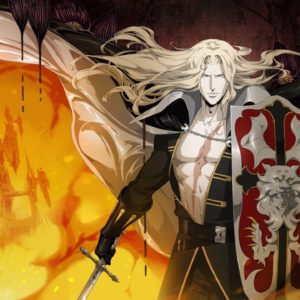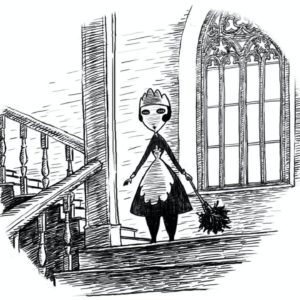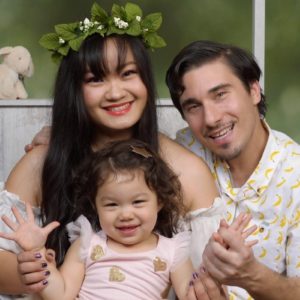Nata Metlukh is an Estonian animator and illustrator based in San Francisco. You may have spotted her colorful and striking art in the pages of GQ or a Google doodle, but if you haven’t caught “Fears” (above) her graduation film from the Classical Animation program at Vancouver Film School, then you have a delightful 2 minutes ahead. For a short about mortal fears, it sure is sweet. I caught up with Nata as she tackles myriad thesis projects for her Masters at the Estonian Academy of Arts.

How did you decide to become an animator?
It naturally evolved from illustration, which grew from graphic design, which transformed from web design, which, in turn, came from my math studies. A long way from science to art! But apparently they are not that different in nature.
What inspired “Fears”?
I wanted to make a film that could be relevant to many people. Almost everyone is afraid of something, right? And if everyone has fears, they must be useful at some point – to give us motivation, protection, extra strength, something. So I tried to build a story around that.
What were your biggest lessons from producing “Fears”?
It was my first film ever, so I learned filmmaking on the fly. Everything was new and everything became a lesson. For example, I’d heard that a short film will turn out 50% longer than you had in mind initially—that was confirmed. The fully colored film is perceived to be slower than the same one rendered only with outlines—I saw that to be true as well. Also, producing one minute of animated film in one month is a pretty accurate estimate.

How do you like being an independent animator? Would you ever want to work at a big studio?
Freedom and independence are the best, but I’m always open to offers!
What is your process for creating a new comic or illustration?
If it’s an editorial illustration, first I read the article, then take a nap, then read it again with notes and further research on the subject. Then I try to come up with visual metaphors, which would not retell the text literally, but would create different stories that are somehow connected to the original thought of the article. Then the client chooses the most obvious idea, and I start working on the drawing. First is the tight sketch, then color scheme for the illustration, then working on the forms of the elements. Then I choose appropriate technique, draw the whole thing, and it’s done! Two-day turnaround for everything. The nap is the most important part.

(“Forest Song” a Google doodle featuring Lesya Ukrainka’s poem)
What’s a recurrent theme in your art, or what inspires you in everyday life?
The theme is everyday life itself. Urbanism, a big city, the universe, chaos, people around, their (mindless) behavior, everything that is funny, slender dogs.
Do you ski or snowboard? They seem to come up in your art fairly often!
I do snowboard, but now I’ve switched to bouldering because it doesn’t require presence in nature. I try to avoid nature: it’s beautiful and all, but really boring. As are regular gyms—so climbing gyms are perfect!
Who is your biggest artistic inspiration?
Saul Steinberg is the best at humor! His glimpses into tiny bits of everyday life are priceless, and his minimalistic approach in visualizing is something I strive to emulate.
What are you currently working on?
I’m finishing my two new films. One is really big: 9.5 minutes long. I’m also working on my thesis research about ugliness in contemporary animation. Everything will be online in June!

Ugliness in contemporary animation? How cool – what can you share about your research?
It will be an exploration of a new tendency in aesthetics that denies the canonical approach in animation and alternatively suggests new techniques. The research includes reviews of ‘ugly’ animated films, among them films by Priit Pärn, who is my mentor at school.
Wow, he must be cool to learn from. What is your #1 career aspiration?
To live off producing my own films.
What is your biggest fear?
Not to live off producing my own films.
What is your favorite cartoon or animated film?
If I need to name one, let it be “Cat Soup” by Tatsuo Satō.



